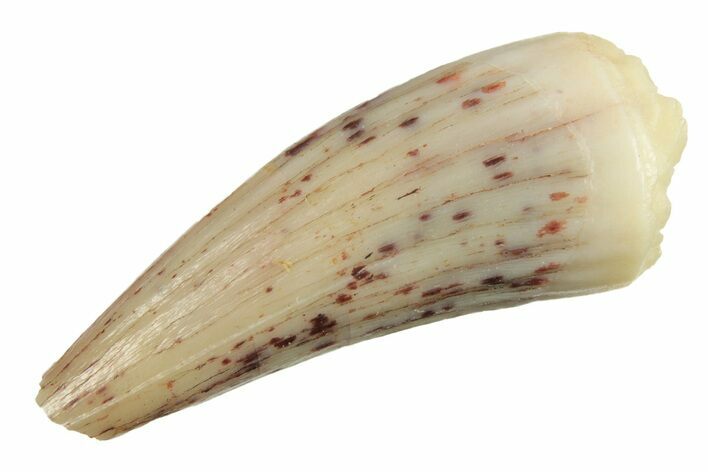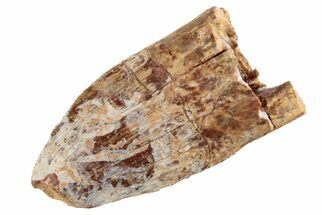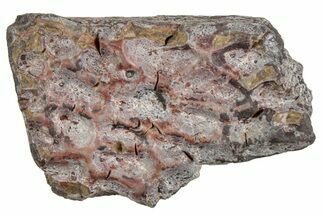This Specimen has been sold.
.52" Fossil Amphibian (Apachesaurus) Tooth - Arizona
What we have for you is a .52" long tooth from a Triassic amphibian, likely from Apachesaurus gregorii. This tooth is from Triassic Chinle Formation that extends from Arizona to Texas. It is excellently preserved with minimal feeding wear on the tip, spectacular enamel preservation, and characteristic deep grooves. It comes with an acrylic display case.
Metoposaurids (family Metoposauridae) were the ginormous ancestors of modern amphibians that managed to survive the Permian-Triassic extinction. These salamander-like creatures approached five feet in length on average, though they may have grown up to nine feet long. These amphibians are characterized by their broad, flat skulls, long limbs, and paddle-like tails. Metoposaurids probably competed at the same feeding level with phytosaurs, having very similar life styles and feeding strategies. Imagine a six-foot salamander that behaves like a crocodile, and you have a mostly-accurate picture of a metoposaurid.
This tooth likely came from the metoposaurid Apachesaurus gregorii, also known as Anaschisma browni. It is one of the commonest tetrapod fossils found in the lower Chinle Formation.
Metoposaurids (family Metoposauridae) were the ginormous ancestors of modern amphibians that managed to survive the Permian-Triassic extinction. These salamander-like creatures approached five feet in length on average, though they may have grown up to nine feet long. These amphibians are characterized by their broad, flat skulls, long limbs, and paddle-like tails. Metoposaurids probably competed at the same feeding level with phytosaurs, having very similar life styles and feeding strategies. Imagine a six-foot salamander that behaves like a crocodile, and you have a mostly-accurate picture of a metoposaurid.
This tooth likely came from the metoposaurid Apachesaurus gregorii, also known as Anaschisma browni. It is one of the commonest tetrapod fossils found in the lower Chinle Formation.
SPECIES
Apachesaurus gregorii
LOCATION
Arizona
FORMATION
Chinle Formation
SIZE
.52" long
CATEGORY
ITEM
#277124
We guarantee the authenticity of all of our specimens.
 Reviews
Reviews












